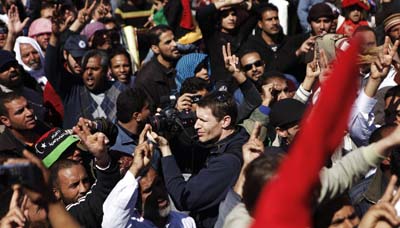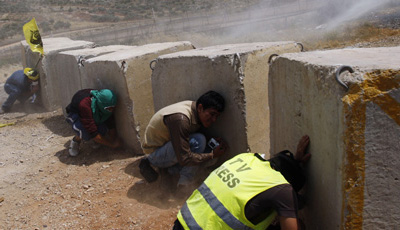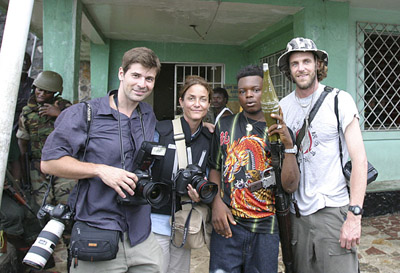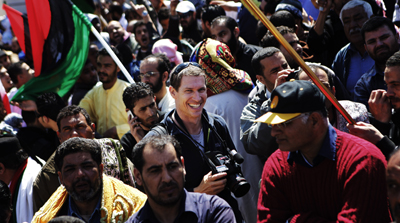
Lack of media coverage compounds violence in Libya
Near the end of August 2014, Egypt and the United Arab Emirates launched airstrikes against what were characterized as Islamist-allied militias fighting near Tripoli, Libya. Or maybe they didn’t. The New York Times broke the story on August 25, 2014; Egypt denied it, the UAE didn’t comment, and U.S. officials made seemingly conflicting statements.

For conflict journalists, a need for first-aid training
Stop the bleeding. It’s a critical and fundamental step in aiding a journalist or anyone wounded in conflict. Hemorrhage is the number one preventable death on the battlefield. And yet large numbers of journalists covering wars and political unrest all across the world are untrained in this life-saving skill. It doesn’t need to be that…
To quote Marie Colvin: ‘What is bravery, and what bravado?’
Not since the worst period of the Iraq war, or in the Balkans the decade before, have so many storied journalists been killed or seriously injured in such a short period of time. Inevitably, the spate of deaths leaves many journalists asking questions about whether and how much they are willing to risk their own…

Attacks on the Press in 2011: Evolution in Journalist Security
The danger of covering violent street protests has become a significant risk for journalists, alongside combat and targeted killings. Sexual assault, organized crime, and digital vulnerability are also hazards. The security industry is struggling to keep up. By Frank Smyth
Chris Hondros: Images of life and death
Photojournalist Chris Hondros, who was killed in Libyaon April 20, captured humanity at its worst and its best, in times of war and despair and at moments of kindness and hope. Here are some of his photos, from some of the world’s most treacherous spots, courtesy of Getty Images. « Previous Image | Next Image…

Tribute to Chris Hondros, who ventured far with his torch
My dear friend Chris. In the silence, I hear the symphony of memories that was your life as I knew it. I see your waving hand gestures and wry smile as you recount stories whilst we sit together in the tropical Liberian heat discussing everything from classical music to aperture priority. My heart and mind…

Photojournalists Hetherington, Hondros dead in Libya
New York, April 20, 2011–Tim Hetherington and Chris Hondros, acclaimed photojournalists who had worked in conflict zones around the world, were killed in an explosion in the western Libyan city of Misurata today. Two other photographers were injured. Hetherington co-directed the Academy Award-nominated documentary “Restrepo,” while Hondros was a 2004 Pulitzer Prize finalist for “his…